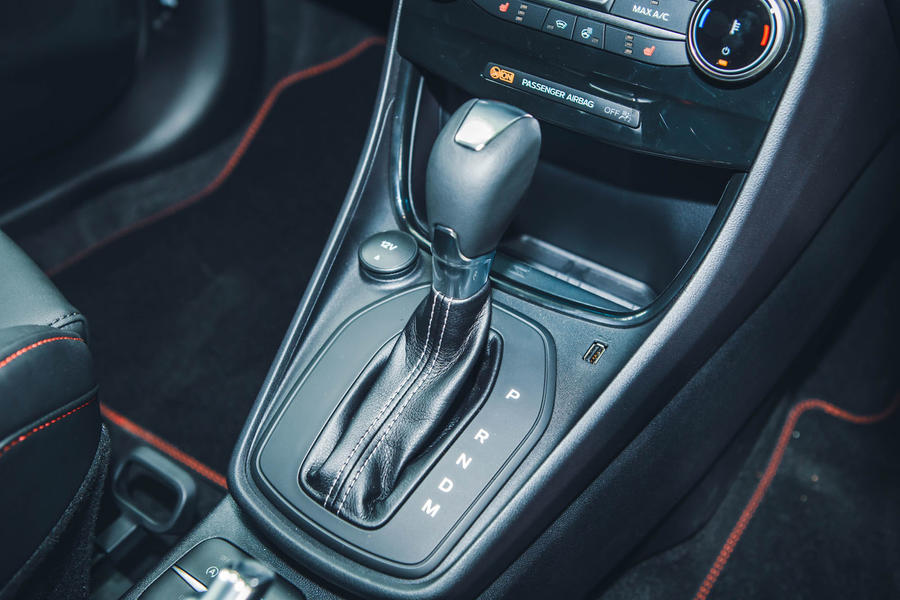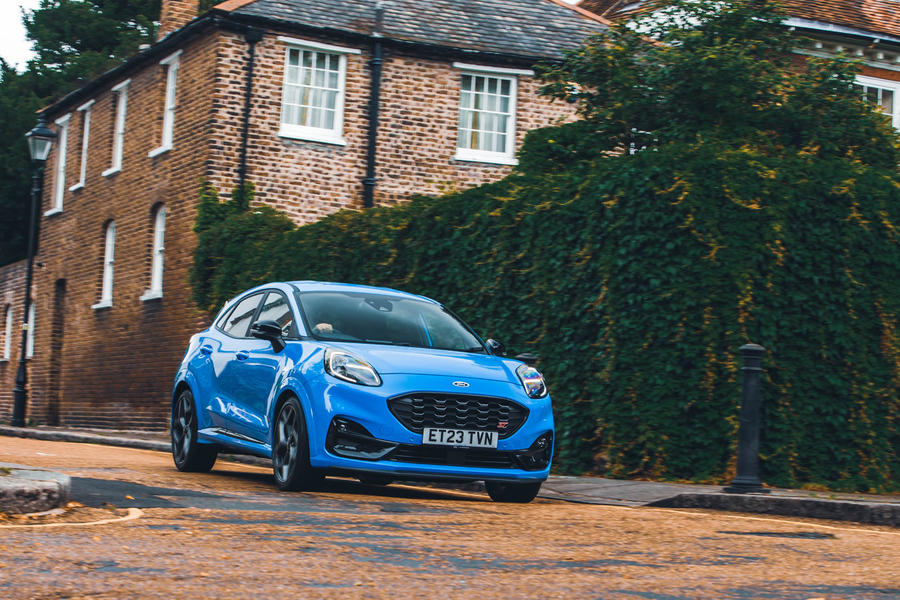New automatic version of hot crossover costs just £10 more – but there’s a catch…
If you look at it in a certain way, choosing the new mild-hybrid version of the popular Ford Puma ST sport crossover instead of the original pure-petrol version will cost you precisely a tenner.
Deciding between the original pure-petrol car (with a six-speed manual gearbox) and the new MHEV one (with a seven-speed automatic) may therefore seem a simple decision: use less fuel and emit less CO2 for a tiny extra outlay. But it’s nowhere near that simple.
The Puma ST’s petrol-manual powertrain is the familiar 198bhp 1.5-litre three-cylinder turbo set-up that we all know and admire from the now-departed Fiesta ST. It returns a combined 42.8mpg on WLTP test cycle, emits 149g/km of CO2 and gives the car a decent 0-62mph sprint time of 6.7sec.

However, the Puma ST Hybrid uses the smaller, 1.0-litre turbo triple as its main powerplant, linked to an integrated 48V starter-generator that can collect modest amounts of electrical energy when the car is slowing and deploy it again when the car accelerates.
Compared with more effective, more frugal hybrids (Toyota’s, for example) this system is relatively simple to engineer and, well, a bit token. Its main claim to fame is that it equips those who don’t want to shift their own gears with a handy dual-clutch unit, complete with easy-to-use shift paddles discreetly mounted behind the steering wheel’s horizontal spokes.
However, the mild-hybrid’s improvements in emissions and fuel economy are modest indeed. Its combined figure is 44.8mpg – up by less than 5% – and its CO2 output declines by less than 3%.
To get that, you’re choosing an engine that delivers 168bhp instead of 198bhp, so 15% less; and a model that’s 0.7sec slower from 0-62mph, a relatively easily detectable margin.
What are the upsides? One is that if your preoccupation is to buy a self-shifting hot hatchback, the Puma ST doesn’t require you to fork out the usual automatic margin – often up to £1500.

Another advantage is this car’s impressive throttle response at very low speeds – delicate manoeuvring in traffic, for instance. Here, the short-term intervention of the ISG is at its most effective: the car responds keenly to the lightest accelerator inputs, albeit with a low-speed grumble from the otherwise-excellent triple, which can sound a bit like a distant coffee-grinder.
As a total entity, this electrified powertrain fits the Puma ST envelope perfectly well. Were it not for the availability of the more powerful Ecoboost one, we would probably have few complaints.
With the 1.0-litre engine in its nose, the Puma ST’s familiar recipe of a neat-looking, well-equipped and reasonably compact crossover is just about good as ever.
If you’ve not been in a sporty Ford for a while, it takes a while to get acclimatised again to the chassis recipe of tautness, firm ride and a quick-geared steering system that offers a curious mix of pin-accuracy, fairly heavy rim effort and mild feeling of deadness until you’re really going for it.
Your regard for the Puma ST increases when you start to start driving it briskly and decisively. At that point, it strikes you as slightly ironic that a car built to such a suburban format should be such an obvious B-roads specialist. But this ST is meant to suit owners who need a practical car that they will also seriously enjoy punting briskly, and in any case, it’s an ideal choice.

Source: Autocar
